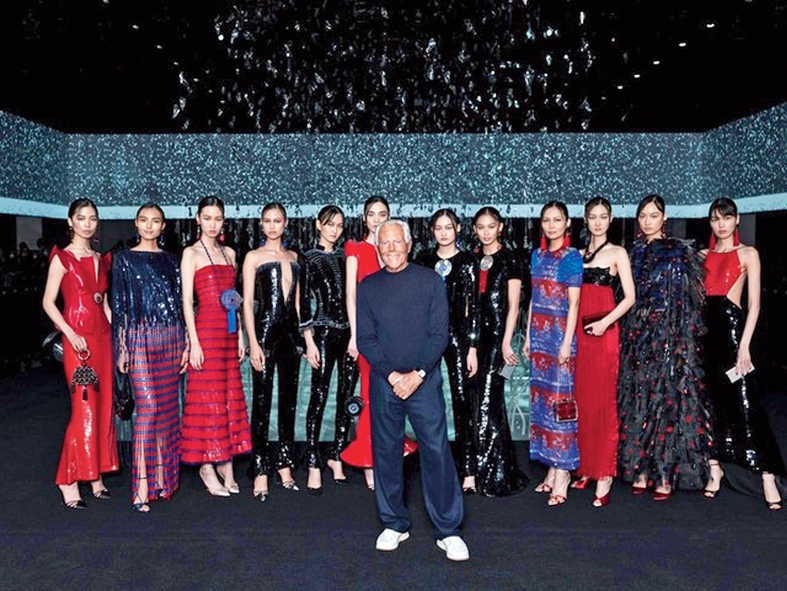For a world in flux, the Internet has come out stronger than ever to unite people and to ensure businesses still have some semblance of normalcy as we continue to be plagued by a pandemic and an economic crisis. The Fashion and Design Council of India (FDCI), as an umbrella body for designers in the country, has stepped up with the idea of “India’s first ever digital fashion week”.
In the last week of May, through a post on social media, FDCI announced that it would be going digital. As more information about the same is awaited, we dialled Sunil Sethi, chairman of the body. “It’s not out of a brilliant idea or a brainwave that I had but because it is the need of the hour as we have to think about the crisis in our industry. After speaking to a lot of people from the industry, including the media, we realised that everyone is missing the energy and excitement that a fashion week is able to create. We spoke to designers and the buyers before we made the announcement and even they are more than happy to take part in this. We are the body of the designers so if we don’t plan, who will? And without planning, we will be doomed. Most importantly, we are a non-profit and when the buyer, customer, designers and wearer want it, we have to do something because we don’t want to lose another season,” said Sethi.
So what does going digital entail? FDCI is looking at a 360-degree digital transformation that will not just be for Couture Week but also for the India Fashion Week and Stockroom. “If things become okay, with permission of authorities and following proper guidelines, we are also interested in a hybrid model. This is a bit of an unknown territory but the younger generation feels comfortable in this so we got to adapt. If the West (like the Paris Fashion Week) has already started doing this, why should we in India be left behind and do it after years?” postulates Sethi.
We also reached out to a few FDCI regulars from Calcutta for their views of going digital. “I think that the fashion week going digital is an innovative solution to showcase the new collections of designers in a visual medium presentation, which is necessary and is the best and an economic way forward. I am very excited to present my new collection creatively on the digital fashion week,” said designer Komal Sood. Sweta Tantia of Tahweave also agreed as she said, “I am sure FDCI will do a fantastic job handling this new frontier in India’s journey of becoming a global fashion giant and making this a way of life.”
Some are, however, sceptical about shifting base online from the tried-and-tested physical affair. From the loss of the human touch to interactions with customers, the concerns are a few. Designer Sayantan Sarkar pointed out the possibility of the potential of real design getting lost in the quagmire of going digital. “The entire packaging seems pretty attractive and to keep the viewers’ attention glued to the channel, the focus might shift, rather, to the hype of the glam-quotient of celebs or the presentation of movie-style ramps…. The packaging will be more important than the product as in all reality shows, where mood and concept are prioritised over details of the garment or the feel of the fabric, and this is a take from other international fashion weeks, which have happened all around the world before India,” he said. He has decided to wait it out this year for “better alternatives to the physical form of fashion”.
With limited resources in hand at the moment, organisations are trying to be as careful as possible, with even Lakme Fashion Week announcing their Virtual Showroom initiative. “The Virtual Showroom will be a marketplace platform for designers and artisans to showcase their past and current collections to consumers, enabling B2C sales for inventories that have been stuck due to the pandemic. With this, there’s hope for the fashion world to continue as best as it can and adapt in new ways that may provide better solutions,” said Jaspreet Chandok of IMG Reliance. “The Virtual Showroom is an initiative which can fulfil this need by leveraging technology. It offers many tools to make transacting more transparent and convenient,” said Ashwath Swaminathan of Lakme, with reference to the initiative’s aim to “simplify buyer interactions, order management and brand discovery digitally and at one place”. The Virtual Showroom is expected to run simultaneously with the physical Lakme Fashion Week event, in the works for the third quarter of the year.
Meanwhile, as more details and dates are awaited from FDCI about their digital initiative, Sethi sounded optimistic as he said, “The situation is such right now that we have to plan at least three months in advance. We have done dry runs and we feel confident we can do this. Every day, we have new additions to our technology that we want to engage in and my team and board are gung-ho about it.”











